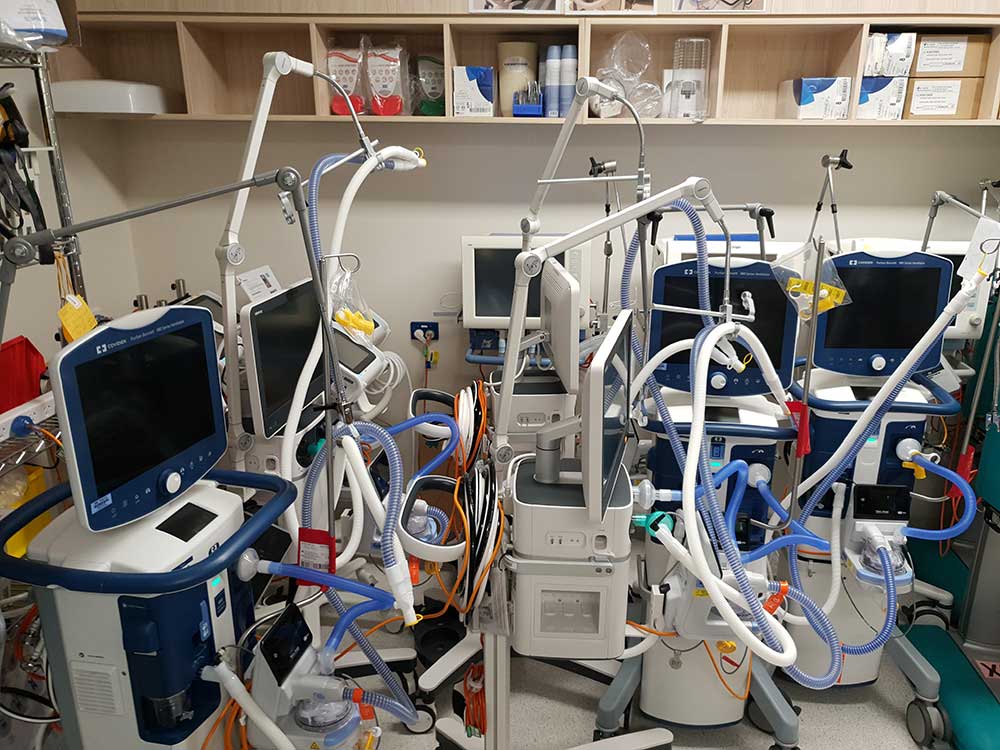The pandemic has thrown most people’s lives into disarray but those on the frontline are often hit the hardest. While health professionals care for the sick in hospitals, there is an army of people behind them working to ensure they can do their jobs effectively — including engineers.
Engineers Australia member and Chartered engineer Sarwan Mudaliar MIEAust CPEng manages the Biomedical Engineering Department at Goulburn Valley Health in Shepparton, Victoria.
Mudaliar and his team work behind the scenes to keep the hospital’s medical equipment and machinery operating.
“I have a team of engineers and technicians, mostly electrical/electronic or biomedical engineers,” he told create.
“My department looks after the medical devices and equipment that’s used in the hospital within the patient care setting.”

This includes servicing physical devices, such as anaesthetic machines, ventilators, ward beds, infusions devices, physiological monitoring systems, neonatal equipment, patient-lifting equipment and defibrillators, as well as some of the healthcare IT systems the hospital uses.
“If there is any faulty equipment on the ward, the end user, the clinician, logs the issue in our computerised maintenance management system and an engineer attends to it on the ward if it’s safe to do so,” Mudaliar said.
“If it’s a major fault we normally bring it back to the workshop to repair.”
While most patients are likely unaware of the department’s existence, it has serviced Shepparton and the surrounding area for almost 25 years.
“I think there are a lot of people who don’t know about the engineering teams within hospitals,” Mudaliar said.
“When you attend hospital, you see all this high tech equipment but few realise that someone needs to repair and maintain it.”
Clinicians rely heavily on the equipment they use, so teams like Mudaliar’s are essential to provide safe and effective care to patients.
And the role of engineers is only becoming more critical as technology evolves and software becomes more prevalent within devices.
“We’re seeing our biomedical engineers have to adapt to the ICT side of things,” Mudaliar said.
“Most medical devices are online now, so there needs to be a bridge between engineers and IT.”

The impact of COVID-19
Over the past two years, Mudaliar and his team have had to adapt to a rapidly changing environment with the needs of clinicians becoming more critical than ever.
“We had to go above and beyond our normal everyday tasks,” he said.
“We received a lot more equipment from the Victorian Department of Health, like ventilators and patient monitoring equipment, because we were setting up an extra isolated ward for COVID-19 patients.”
Mudaliar’s department was responsible for installing the additional equipment, as well as implementing patient monitoring systems.
When the ward was up and running, the engineers switched to making repairs remotely where they could. However, sometimes going onto the ward was unavoidable.
“We would have to don all the PPE, so the full gown, hair cap, face masks and shields — all of that,” Mudaliar said.
While their workload increased significantly, Mudaliar said his team and the clinicians they worked alongside were a constant support to each other.
“We were working a lot closer than before. We had to be able to rely on each other, which I think brought us together,” Mudaliar said.
“I think teams like mine are kind of the unsung heroes of the hospital systems.”



